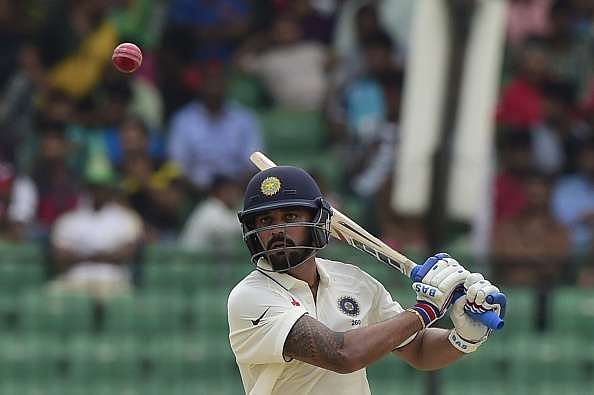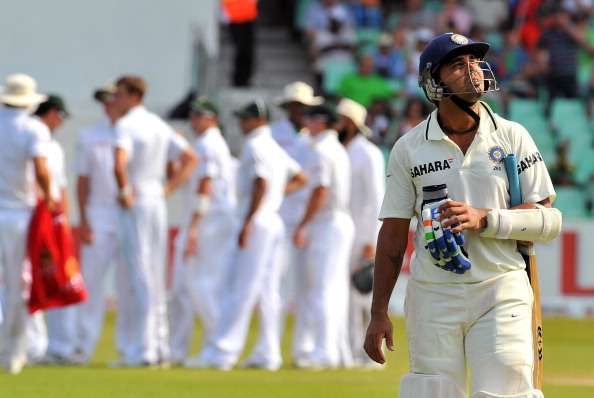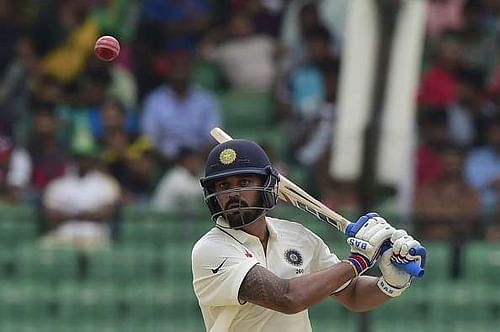
How Murali Vijay has turned a corner in his Test career
The last time that India toured the West Indies, in 2011, Rahul Dravid and VVS Laxman were a part of the team, Virat Kohli was making his Test debut, and India were yet to face a series of humiliating whitewashes that would later be remembered as two of India’s worst performances away from home. In the aftermath of the 4-0 drubbing at the hands of England (2011) and Australia (2011-12), which were worsened by the home series loss to England in 2012, things changed dramatically in Indian cricket.
The aforementioned legends – Dravid and Laxman – called it a day the following year, and another maverick of their era – Virender Sehwag – was unceremoniously shown the door, as was his Delhi teammate, Gautam Gambhir. The Indian cricket team was overhauled from tip to toe, and by the time the Caribbeans visited India for a return tour in 2013 – which was also Sachin Tendulkar’s last Test series – Tendulkar was the only connection remaining that linked the upcoming crop of cricketers with the era gone by.
Since then, the team has been in a transition stage and has largely been dependent upon the spinners – namely Ravichandran Ashwin, Ravindra Jadeja, Amit Mishra and Harbhajan Singh – for success at home. That a country known predominantly for its batting has been dependent upon the bowlers for its victories does come as a surprise. It has been during this era of transition, that three young Indians have persevered, and have taken upon themselves the burden of stabilising the Indian batting line up. Murali Vijay, Ajinkya Rahane and Virat Kohli have been the three lynchpins of the Indian batting contingent in Tests and have played crucial roles in some of the famous Indian victories, both at home, and away from home.
The oldest of the three, Vijay, has persevered the most, for he has been a part of the team since 2008, and over the years has established himself as one of the most consistent top order batsmen as well as the solution to India’s opening woes since the departure of Sehwag and Gambhir.

An inconsistent beginning
It took Vijay almost two years to get his maiden Test hundred. That he was persisted with for such a long period, especially in a country like India, where the batting pantheons include some of the greatest Test batsmen of all time indicate two things. One, that India were desperate for a solid opening batsmen (this is despite the batting friendly domestic structure that the country has put in place) and that they weren’t finding any, and two, that albeit his inconsistent run, Vijay had the right technique for an opening batsman and perhaps that forced the selectors to groom the youngster rather than shun him apart. The scores of 33, 41, 87 and 30 in this first four Test innings don’t exactly speak of inconsistency per se, but the scores that followed definitely do.
Having gained his Test debut because Gambhir had had a spat with Shane Watson during the third Test against Australia in 2008, Vijay’s formative years in international cricket saw him emerge as a perfect replacement – for players injured, suspended or maybe too tired with their lives – who was willing to fill in with promising 30s and 40s and even 50s on occasions, but someone who just couldn’t take the next leap and go on to score big. While the scores of 4, 32 and 7 that followed his first four Test innings necessitated the need for a replacement of the replacement, the Indian Premier League season of 2010 that followed, in many ways, changed the fortunes of the Tamil Nadu-born cricketer.
458 runs from 15 IPL games at an average of 35 and a strike-rate in excess of 150 gave the much needed impetus to Vijay’s career and perhaps it was the confidence that the right-handed batsman gained from the tournament that helped him excel at the international level, for his stats , at least in India, saw a drastic improvement. His first Test century against Australia in Bangalore in 2010 and the 37 that he scored in the 2nd innings of the same match were his only two appearances in Tests for India that year. Outside Asia, however, there was still a question mark on his batting credentials, to which he did put a full stop, albeit a bit late in his career.
A string of disappointing performances in South Africa and the West Indies in the 2010-11 season, that saw Vijay having scores of 19, 9, 8, 0, 11, 3, 5, and 45 against his name from 7 innings, made the selectors think that the right-hander wasn’t probably the best choice for the opener’s slot. Consequently, he was dropped from the team for the away tours of England and Australia (2011-12). That it was a blessing in disguise, as India were smacked left, right and centre, is anybody’s guess. He was picked as the reserve opener for the return series against England at home, but didn’t feature in any of the four Tests.
